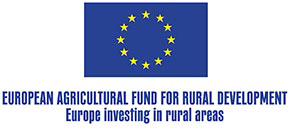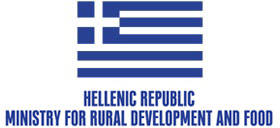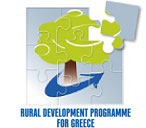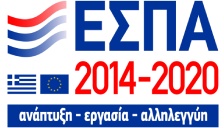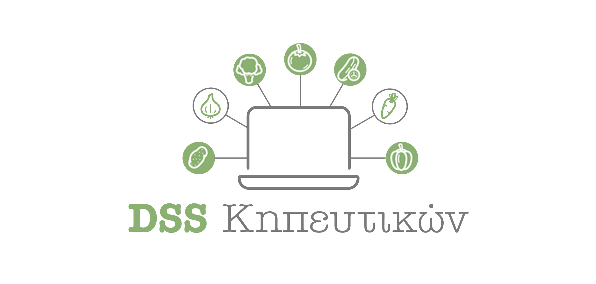NutriSense: The Smart Fertilization Tool That Is Changing Agriculture

In an era when the agri-food sector seeks solutions for sustainability, resource savings, and increased efficiency, technology is emerging as a crucial tool. One of the most innovative examples of its application in Greek agriculture is NutriSense, an advanced decision support system (DSS) for fertilization management. It was developed by the Laboratory of Vegetable Production at the Agricultural University of Athens.
Through Measure 16 ‘Cooperation’ and the Operational Group (OG) ‘DSS-KIPEFTIKON’, the lab’s research team partnered with the ‘Psaris’ Agricultural Cooperative and GAIA EPICHEIREIN (coordinator of the OG) to implement the system.

In an interview with Ypaithros Chora, Professor Dimitris Savvas, director of the Laboratory of Vegetable Production at Agricultural University of Athens, explains how NutriSense transforms traditional fertilization into a scientifically backed, automated process. He discusses the tangible benefits for producers who took part in the pilot program and explains how the system has evolved into a university spin-off, paving the way for broader application across Greece.
Professor Savvas’ experience not only highlights the technological advancements in agriculture but also showcases the potential of bridging research and production in practice.
Can you explain exactly what NutriSense is and how it works?
NutriSense is a digital Decision Support System (DSS) specifically designed for the rational management of fertilization in cropping systems, especially in hydroponic or intensive greenhouse cultivation. It relies on specialized algorithms and input-output nutrient balance calculations in the root zone. Its operation includes monitoring real crop data and nutrient concentrations through soil or drainage solution analysis (for hydroponics).
Then, it automatically calculates the necessary fertilizer doses for the crop. The platform is accessible online and can connect with sensors and automated fertigation units, offering a fully controlled and efficient fertilization system.
Now that the project is nearing completion, are there any specific outcomes you’d like to highlight?
As the project wraps up, we would like to emphasize two key points. First, NutriSense was tested and optimized under real production conditions. In collaboration with the producers and agronomists of the Psaris Cooperative, it was tailored to meet their specific needs, demonstrating its adaptability to various crops and irrigation water qualities.
Second, it has been integrated with automated fertigation systems, enabling fully automated interventions. This transforms decision-making from a subjective to a scientifically validated process.
What were the benefits for the producers of the Psaris Agricultural Cooperative who used the software?
The cooperative’s producers, who piloted NutriSense, saw clear benefits through specialized fertilization management. They were able to cut fertilizer use by about half compared to traditional methods, thus reducing over-fertilization and production costs. At the same time, crop productivity improved thanks to better nutrient management, leading to more stable growth and higher product quality. As a result, the sustainability of their production system increased, nutrient loss was significantly reduced, and water pollution was minimized.
Have other producers shown an interest in using NutriSense?
Yes, there’s growing interest from producers in various regions of the country. NutriSense has gained attention both because it reduces costs and environmental impacts, and because it helps optimize plant nutrition and thus production. This interest now extends beyond cooperatives to individual producers and agronomists seeking precision solutions.
As of 2024, NutriSense is a spin-off company of the Agricultural University of Athens, enabling more and more producers to access its services.
Can all producers use digital tools or is specific expertise required?
NutriSense is designed to be user-friendly and doesn’t require advanced IT skills. However, basic knowledge of plant nutrition is useful for maximizing its potential. In practice, producers who work with agronomists or are familiar with digital tools can easily integrate NutriSense into their daily routine. Additionally, the project team offers training and support at all stages, making it accessible even to producers just beginning their digital transformation.
The Producer Who Cut Costs and Improved Quality with Precision Agriculture
How Nikolaos Epitropakis from the Psaris Cooperative saved resources and increased hydroponic cucumber yields.
Transitioning to precision agriculture based on evidence-based decision-making is no longer a theoretical goal, it’s a practical necessity for the competitiveness and sustainability of today’s producers.
Nikolaos Epitropakis, a member of the Psaris Agricultural Cooperative, was among the first to participate in the NutriSense pilot program. In this interview with Ypaithros Chora, he shares his experience using the platform over the past two years, the financial and qualitative benefits it brought, and how NutriSense transformed his daily cultivation practices.
His message is clear: Technology does not replace farmers’ experience, it enhances it. When used correctly, it can reduce costs, improve quality, and ensure more sustainable farming.
What kind of crop do you grow?
I grow long cucumbers, hydroponically, for export.
Why did you decide to try the new NutriSense software, and how long have you been using it?
I’ve been using it for two years. Meeting Professor Savvas played a key role. We’ve worked together for over 15 years, and I trust both his scientific knowledge and his integrity completely. I believe his expertise; especially when it comes hydroponics and plant nutrition/fertilization, he is among the best in the country.
Did you face any difficulties during implementation?
There were no major issues with the software itself. Most of it is understandable both to me and to the average grower. The flexibility to adapt the system to local needs makes it even easier. The only challenge I faced was a delay in coordination with the analysis lab, due to my remote location. Sending samples and receiving results was sometimes slow.
Did you notice any changes in your fertilization approach? Did it advise you to do things differently than before?
Absolutely. I used to apply two fixed fertilizer formulas: one for the vegetative phase and one for fruiting, adjusting based on crop progress and personal experience—but without monitoring nutrient uptake through water analysis.
Using NutriSense changed everything. In each crop stage, there was improvement because fertilization decisions were based on actual drainage water analysis. The guidance from NutriSense significantly altered my approach to plant nutrition.
Were there cost savings? If so, what were they?
There was a substantial reduction in fertilizer use—and therefore in cost. The savings were around 25–30%, mostly by eliminating over-fertilization. For example, with nutrients like calcium nitrate, I used to waste up to 50% at times.
Did you see differences in yield or product quality?
The good news is that, while cutting costs, I also saw an increase in yield. However, the most significant improvement was in product quality. Rational, targeted fertilization led to better quality: more flavorful cucumbers with longer shelf life. This allowed us to market them under better conditions.
Would you recommend the system to other farmers?
Not only do I recommend it wholeheartedly, but I actively encourage producers to use it across all their crops.
